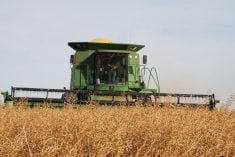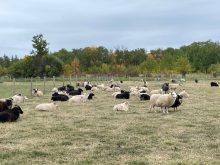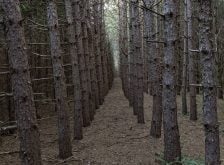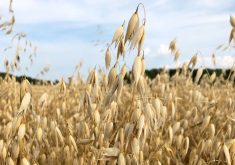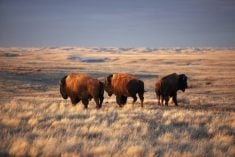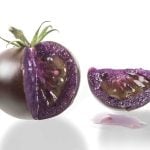Yellow mustard, just like ketchup, is an ever-present condiment with almost all conventional fast foods. Who could eat a hot dog in Canada without first lathering the bun with swaths of yellow mustard?
Canada, as it turns out, is one of the world’s biggest producers of three kinds of mustard — yellow, oriental and brown mustard types. The United States is the biggest consumer of Canada’s yellow mustard crops. Canada currently is second, behind Nepal, in producing mustard seed, but we hold 57 per cent of the global market. Both India and Pakistan are major mustard producers, but little is exported.
Read Also

Claas brings 1000 Series SP forage harvesters to Canada
In mid-August, Claas unveiled its new line of Jaguar forage harvesters at an event in Visalia, California, deep in the heart of that state’s dairy region.
Normally on the Prairies, Saskatchewan grows around 75 per cent of the mustard acres and Alberta around 25 per cent. Little to none is grown in other provinces. That translates to around 50,000 to 70,000 acres in Alberta and 150,000 to 200,000 acres in Saskatchewan, and a five-year average of 150,000 tonnes in Saskatchewan and 50,000 tonnes in Alberta.
READ MORE: Finding the ‘new normal’ for mustard acreage
In 2021, mustard yields averaged 431 pounds per acre, where normally the yield is just over 1,000 pounds per acre. In 2021, which was a very dry year particularly in the traditional mustard-growing areas, the total mustard yield for all of Western Canada was around 50,000 tonnes. This is about 30 per cent of the normal yield. Mustard seed pricing for all three types had been hovering around 30 to 40 cents per pound. Mustard prices in 2021 shot up to as much as $2 per pound, if you could find any. In 2022-23, mustard prices in a fairly normal growing season listed yellow at $1.20 per pound, oriental at $1.18 per pound and brown at $1.16 per pound.
Mustard production in both Alberta and Saskatchewan does best in the more southern, drier areas of both provinces. Mustard is a cool-season crop that is seeded in late April or early May in 5 C soil. The emerging seedlings for all three types are fairly frost tolerant and, as expected, more drought tolerant than canola. The preferred soils are the brown and dark brown types. All of the mustards reach maturity in 90 to 100 days.
Brown and oriental mustards are the same species and can, therefore, intercross, whereas yellow mustard and canola are separate species and do not crossbreed. Canola bushel weights are around 50 pounds, whereas mustard seeds are about 60 pounds per bushel.
If you intend growing mustard crops in your crop rotations, there are several excellent fact sheets online such as the Mustard Production Manual by the Saskatchewan Mustard Development Commission and Mustard Production for Alberta by the Agriculture Research Division of Alberta Agriculture and Rural Development. Both publications are around 20 pages.
Challenges to growing mustard
Getting into mustard growing presents several problems that do not apply to most presently grown canola crops. That is, both wild mustard and canola are problem weeds in all three types of mustards. With canola, we have glyphosate and other types of herbicide-tolerant canola varieties. This allows growers to remove volunteer canola and mustard weeds as well as other weed species from canola crops.
There are no such fully selective herbicides for mustard crops that can remove canola or wild mustard. Wild mustard may also be referred to as field mustard or charlock in Eastern Canada. The black seeds of wild mustard and volunteer canola are obvious harvest contaminations of all mustards due to their colour and larger size.
If you have cropland with either wild mustard or volunteer canola, it is recommended that you wait and clean up these weeds for at least five years before seeding a field to cultivated mustard to eliminate these volunteers.
Unfortunately, all of the mustards are susceptible to many of the disease and insect problems that damage or downgrade canola crops. Mustards are also as susceptible to flea beetles as canola. Other insect pests include grasshoppers, diamondback moths, bertha army worms and cabbage seedpod weevils. There are many seed treatment products available for all of the mustard seed types.
If you would like to try your hand at growing any of the mustard species, you must be very careful of clubroot. None of the mustard varieties have any resistance to the clubroot fungus. Consequently, you must be very careful not to introduce equipment with the mud-borne disease fungus onto your mustard cropland. Stringent procedures must be adopted to safeguard your mustard acres.
As far as weed control goes there are a wide range of effective herbicides that will control non-cruciferous weeds from soil active, in-crop herbicides to a wide range of foliar types.
Mustard crop fertility would be very similar to that of canola but at a reduced rate due to drier growing conditions to accommodate a 15- to 20-bushel crop. That would mean a 17-bushel yellow mustard crop would take up around 70 pounds of nitrogen per acre, 25 pounds of phosphorus, 45 pounds of potassium and 12 pounds of sulphur per acre.
Mustard cultivation started in Canada in 1936 on about 85 acres and over the last 85 years yields have always remained very low in comparison with canola, which has doubled and even tripled yields over those years. Most mustard crops show up at around 15 to 17 bushels per acre. Some of the better growers, in a good season, could see 58 to 60 pounds per bushel — some 10 pounds per bushel heavier than canola.
Hybrid mustard
In recent years, there have been attempts to produce hybrid mustard varieties such as AAC Brown 18 and AAC Yellow 80. Under much higher fertility regimes, the brown mustard achieved 60 bushels and the yellow 48 bushels. These mustards are composite varieties and not true hybrids like their canola counterparts. Many factors need to be sorted out with these “new hybrids” but progress is being made in Saskatchewan.

I can end this discussion with a story about wild mustard (charlock) in Alberta. While I was a provincial plant pathologist with Alberta Agriculture in the late 1980s, I was asked by several canola growers in Leduc and Athabasca, Alta., to look at what they considered to be unusual canola crops.
It turned out that 15 canola crops I checked out at Leduc and two crops at Athabasca were, while in full bloom, from 40 per cent to virtually 100 per cent wild mustard. The herbicides in use at that time had little or no control on wild mustard, which grew faster and overpowered the canola seedlings. I showed the growers the lobed leaves, hairy stems and little to nothing growing in the seeded rows. The Athabasca grower took off 27 bushels of the 100 per cent wild mustard crop on 150 acres and moved it into the canola seed system. You could say that his 27-bushel crop was a “hot” item.
Believe it or not there are in existence some very hot mustards just like the hot or very hot range of peppers. Some individuals not only like their mustard relish hot but prefer it burning hot.
Two common sayings are “As keen as mustard” and “He/she didn’t cut the mustard.”




